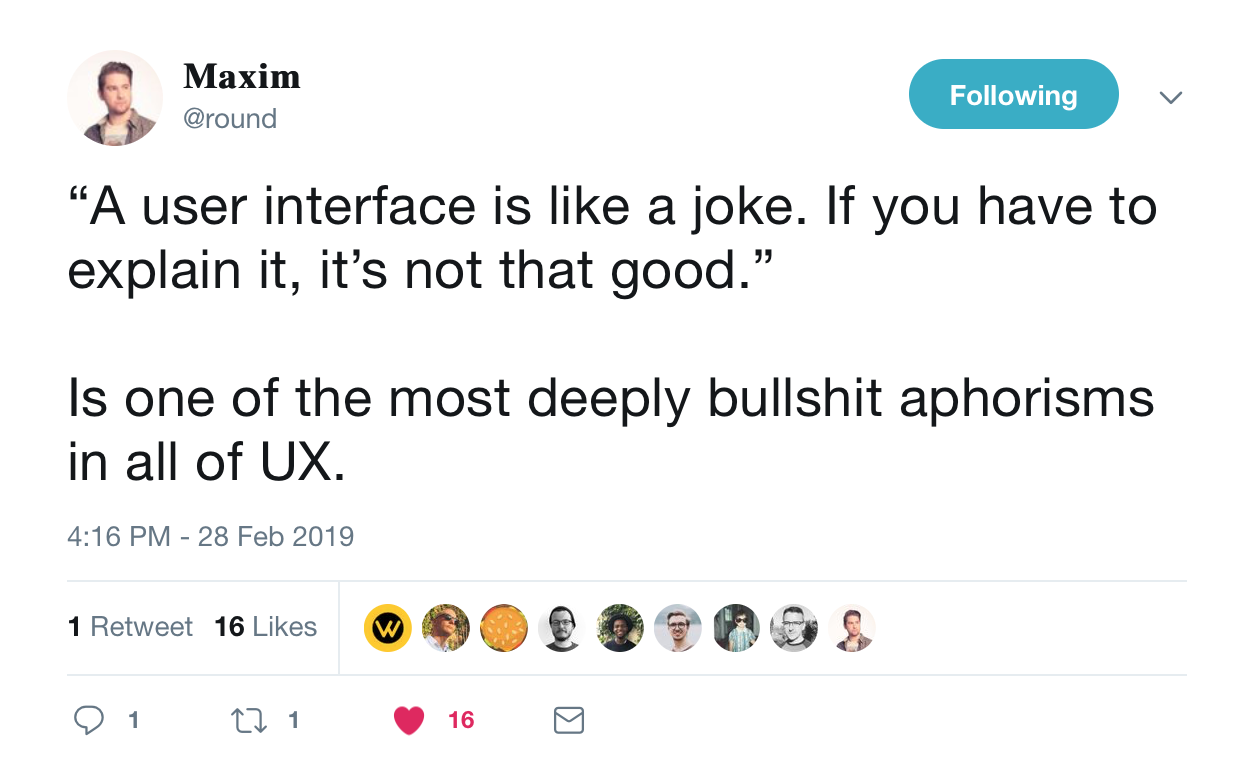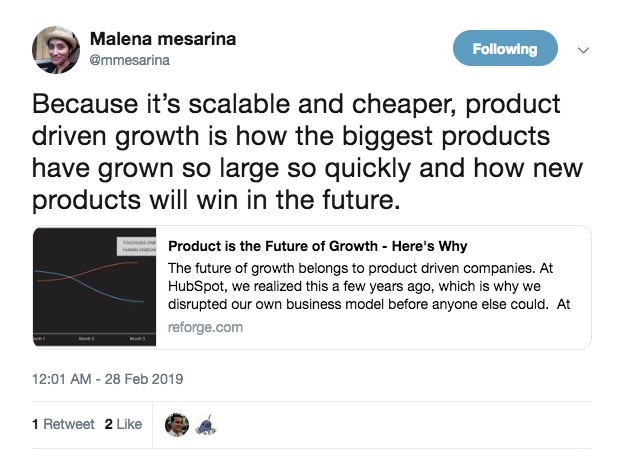Overheard in Product: UI jokes, empathetic UX, survivor bias, PLG, and the feedback fallacy

.png)

.png)
We’re back with part 9 of Overheard in Product—a series where we round up all of the tantalizing conversations from product folks that you may have missed on the web last week.
This week, we talk about why UI is no joke, a shining example of empathetic UX, the big problem with survivor bias, the future of product, and why you're doing feedback all wrong.
Let’s get to it.
Maxim Leyzerovich, UX Manager at Capital One, pushed back on a common quip about user interfaces.

And folks were in agreement. Pavel A. Samsonov hopped in to talk about a similar tweet of his where he linked to this super smart article from Christina Wodtke about the difference between intuitive and unlearnable design. It's the first time I've heard the term unlearnable design, but it won't be the last time I talk about it.
Food for thought: What parts of your UI should be explained? How can you explain them?
Estelle Weyl shared Jo Dodd’s tweet about an experience with UK florist Bloom & Wild.

Food for thought: What of your marketing or product experiences might be upsetting to folks? How can you give them more control over what messages they are receiving?
Ric Fulop, posted a must-read thread about survivor bias from what the Navy learned during WWII.

The thread reminded me of this xkcd cartoon—I'm ready for these kind of disclaimers.
Food for thought: What product best practices have you accepted and implemented that might actually be a result of survivor bias?
Malena Mesarina shared a Reforge article from Hubspot VP of Growth Kieran Flanagan where he touted the future of product-led growth.

So what's product-led growth? Kieran starts off with a great definition: "I’m talking about using in-product levers to grow, in place of or in conjunction with external marketing and sales channels. When people can try your product for free, they experience the value of your product before making the decision to pay. This turns more people into happy users, creating more opportunity for them to tell their friends, who in turn tell their friends. This can trigger virality and widen the top of your funnel."
Food for thought: How product-led is your company? How easy (or difficult) would it to become more product-led?
I’ve been sharing this article from Harvard Business Review with everyone I come in contact with this week.
It's all about how companies that are experimenting with becoming increasingly transparent can shoot themselves in the foot with feedback.
This line in particular stopped me in my tracks. “The research is clear: Telling people what we think of their performance doesn’t help them thrive and excel, and telling people how we think they should improve actually hinders learning."
Until next week—tweet at me any good product convos you see happening in real time that you'd like to be featured.